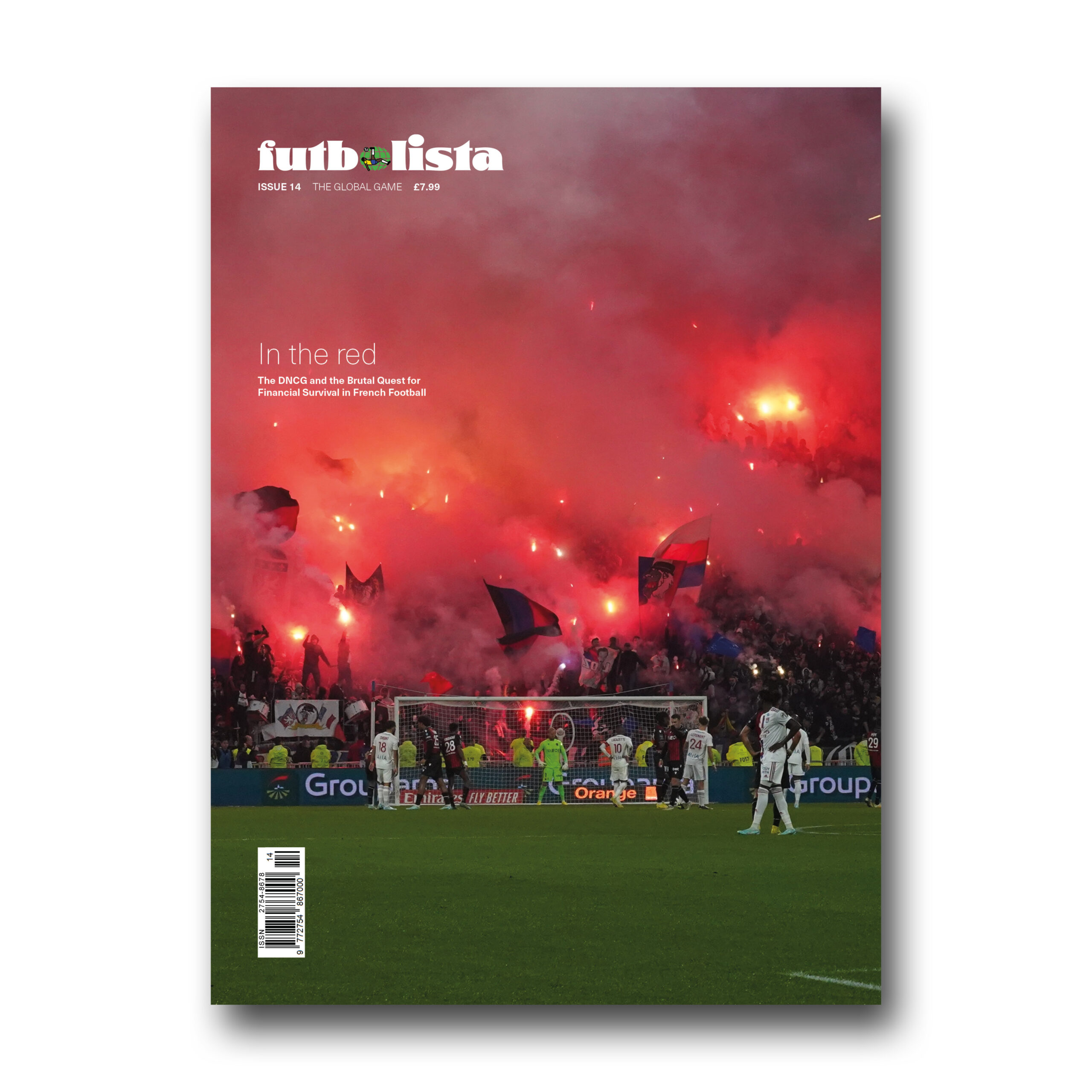
After Fourteen Issues, We’re Taking a Break
FUTBOLISTA Magazine is coming to an end (for now) after the recent release of our fourteenth edition.

KOWLOON, HONG KONG — For the average visitor, the innovative and ultra-modern Hong Kong hides its sporting identity. To take a walk down the sky-scraping streets is to marvel at once at Hong Kong’s commanding architecture, general hubbub and that perennial question: where the bloody hell are its grand cultural venues? On a sightseeing bus from Peak Road in the leafy green west of Hong Kong Island, overlooking the towering central business district and busy Victoria Harbour, it would be easy for those with a keener eye to spot a football pitch tucked away behind office blocks, but even easier for the passing tourist to dismiss these grounds as obsolete relics of an unknown footballing past.
Amongst the restless quarters of Hong Kong Island, Kowloon and the New Territories, Hong Kong is in fact home to dozens of sports stadiums, including Aberdeen Sports Ground, Mong Kok Stadium, Yuen Long Stadium, South China Stadium, Tseung Kwan O Sports Ground and Hong Kong Stadium. In a location devoid of space, the islands could have a combined capacity for over 50,000 spectators every matchday. Yet even the sight of one of these arenas whilst exploring the many neighbourhoods, markets and financial areas of Hong Kong is incredibly rare.
Some stadiums are surrounded by an entanglement of twisting motorways; others are cast in the shadows of Hong Kong’s famed high-rise buildings. Either way, local football is hardly the priority of residents and holidaymakers alike. With most interest diverted to the television for the stars of the English Premier League, it leaves you wondering whether the beautiful game truly exists in Hong Kong.
Even a simple Google search can be misdirecting in one’s hunt for football in the former British territory. However, for one Sunday in May, the Hong Kong Premier League (HKPL) was trending just a little higher than the Hong Kong Public Libraries (HKPL). The city’s top football division, founded in 2014 with nine inaugural member clubs, is gradually re-kindling the fire for professional football in Hong Kong. The latest edition of the HKPL ended with a bang on 23 May 2021, as the league’s split into a championship and relegation group created a final day showdown for the title between 10-time winners Kitchee SC of Kowloon and storied side Eastern. Separated by just a point before kick-off, it was a momentous occasion which warranted an equally historic audience.
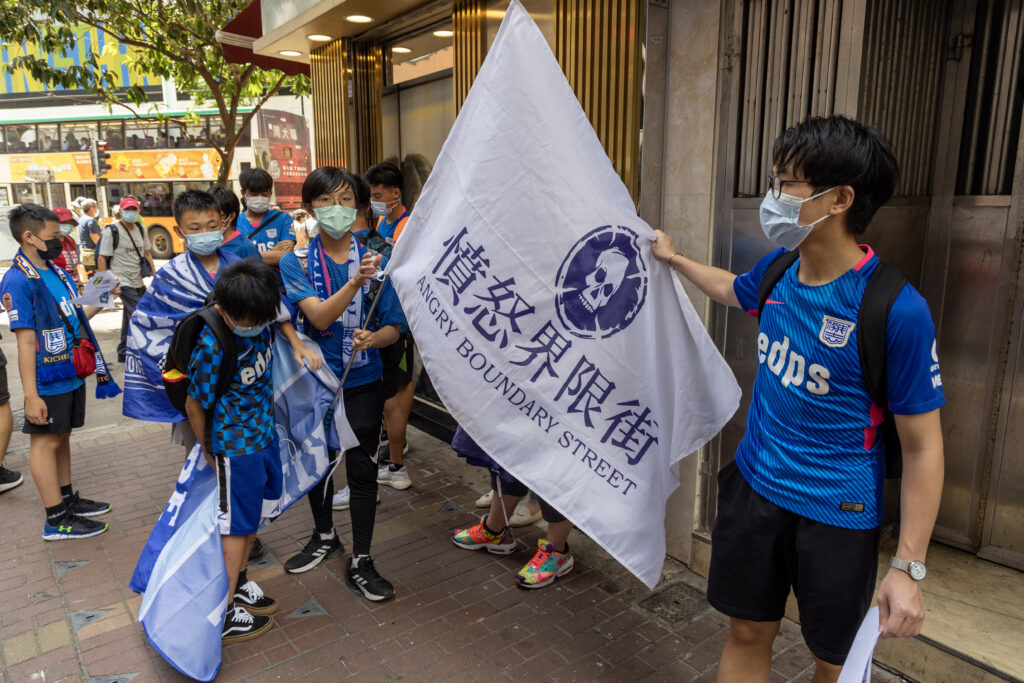
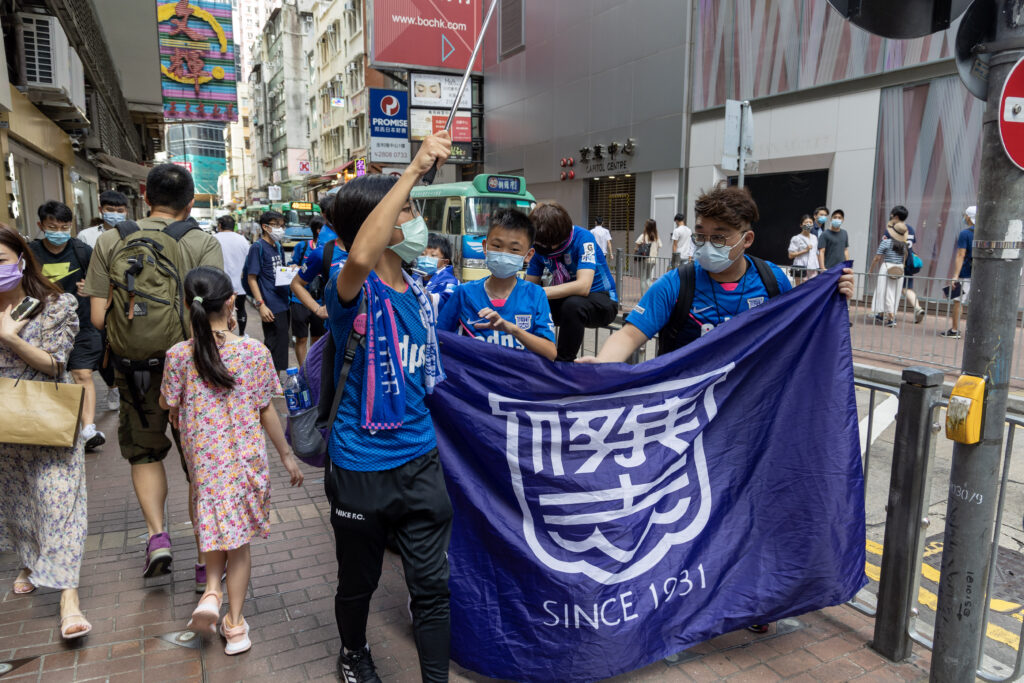
And so the football fans of Hong Kong answered the call to action. Because after all, local football did matter in Hong Kong, and will continue to matter for a long time to those who pursue it. While Kitchee and Eastern groundshare the quaint Mong Kok Stadium in Kowloon – the sprawling Hong Kong urban district across the water from Victoria Harbour – the most important football matches in the domestic game are almost always hosted by the impressive Hong Kong Stadium. With a verdant backdrop, the formerly titled ‘Government Stadium’ is located in a portion of Hong Kong Island almost entirely dominated by apartment blocks and sporting venues. Accompanied by the large Happy Valley Racecourse and 12,000-capacity South China Stadium on either side, Hong Kong Stadium – home to the Hong Kong national football team and one-time temporary base for HKPL sides Pegasus and Eastern – was once more the venue for another significant chapter in Hong Kong’s football story.
As Kitchee and Eastern geared up for a second championship-deciding last day contested between the two rivals in the space of four years, some 7,800 football fans descended on the Hong Kong Stadium amidst dramatically stifling late-May temperatures. The occasion was a culmination of one of the toughest football seasons to date in Hong Kong, yet it is also a campaign which has ultimately witnessed the city’s football, and passion for the local game, survive the COVID-19 pandemic. Supported by government funding and the Hong Kong Football Association, Kitchee Sports Club is at the forefront of Hong Kong’s football revolution.
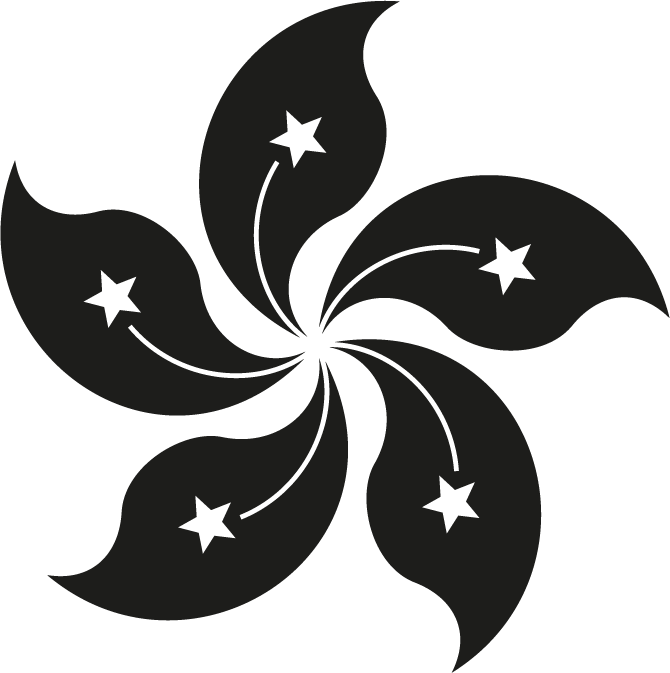
Founded in 1931, Kitchee are the oldest representatives of the Hong Kong Premier League – a division increasingly occupied by clubs established in the 21st century. Hong Kong’s proud football history dates back to the creation of Hong Kong Football Club (HKFC) in 1886, placing Kitchee in fine company as one of the city’s most historical surviving football teams alongside South China AA (1910) and Eastern (1932). In spite of its obscurity to the European football fan, Hong Kong has a proud footballing tradition, with the first clubs created at a similar time to their Western counterparts and earning the title of Asia’s first professional football league in 1908.
Kitchee were central to the sport’s rising popularity throughout Southeast Asia as immediate supporters of the local game in Hong Kong. Unlike their big name rivals HKFC and South China, the club’s founding fathers were Hong Kong residents, excited by the arrival of the beautiful game and eager to make their own mark in the community. Whilst at first lacking the finances to dominate Hong Kong’s football scene, the ‘Bluewaves’ or ‘Bluebirds’ were an excellent addition to the game from grassroots level to the city’s expanding football pyramid.
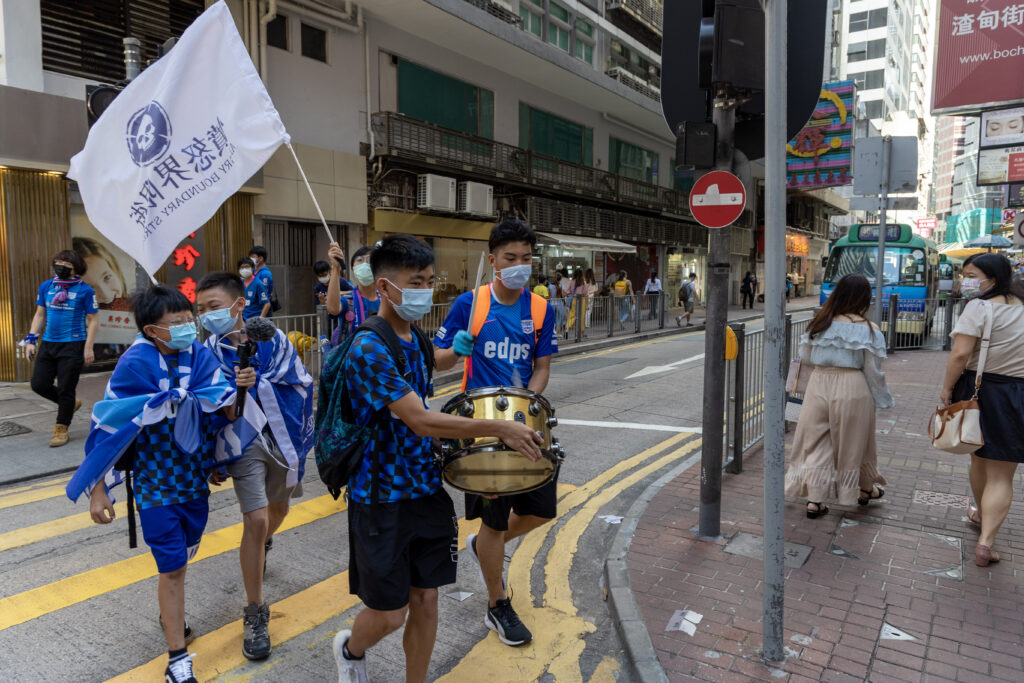
As was the case with most global football operations during the wartime era, the development of football in Hong Kong was largely halted by World War II and conflicts within Asia. It was a considerable blow for the Hong Kong Football Association (HKFA), who were intent on forming a competitive professional league as one of Asia’s trailblazing football destinations. The golden age for football in Hong Kong is often attributed to the pre-war period, yet little information is available following the destruction of record books during the bombing of Hong Kong in the Second Sino-Japanese War of 1937 to 1945. Moreover, as Hong Kong’s Asian neighbours gradually returned to sporting action, the city was forced to prolong its footballing drought until the end of Japan’s occupation of the islands in 1945.
Amidst this shifting setting at home, football finally returned to Hong Kong – and more specifically Kitchee SC. While the club’s early years and arguably the heyday of football in Hong Kong were interrupted by war, Kitchee returned from the hiatus with force. Granted full professional status by the HKFA with their acceptance into Hong Kong’s esteemed First Division (the top tier of football in Hong Kong until 2014) in 1947, the Bluewaves set the league alight in their debut campaign, accumulating 46 points from 28 matches to lift a first league title in Kitchee history.
It was to be a decisive stint in the top flight for the club, establishing Kitchee as the most threatening challenger to South China AA’s unwavering dominance over the game in Hong Kong. Although support for football in Hong Kong somewhat wavered, Kitchee blossomed to win three championships between 1947 and 1964. By this point, Hong Kong had become a financial superpower and home to one of the most multicultural societies worldwide whilst remaining under British rule. However, Kitchee turned to Hong Kong-based talent to progress as a First Division mainstay, headlined by local heroes Yiu Cheuk Yin and Lam Sheung Yee. The latter remains one of the most renowned homegrown success stories of Hong Kong’s football journey, as ‘Spencer’ Lam Sheung Yee graced the 1960 Olympics in Rome with the Republic of China football team and garnered a winner’s medal from the Asian Games of 1958 whilst plying his trade in Hong Kong’s First Division with Kitchee, Eastern and Yuen Long.
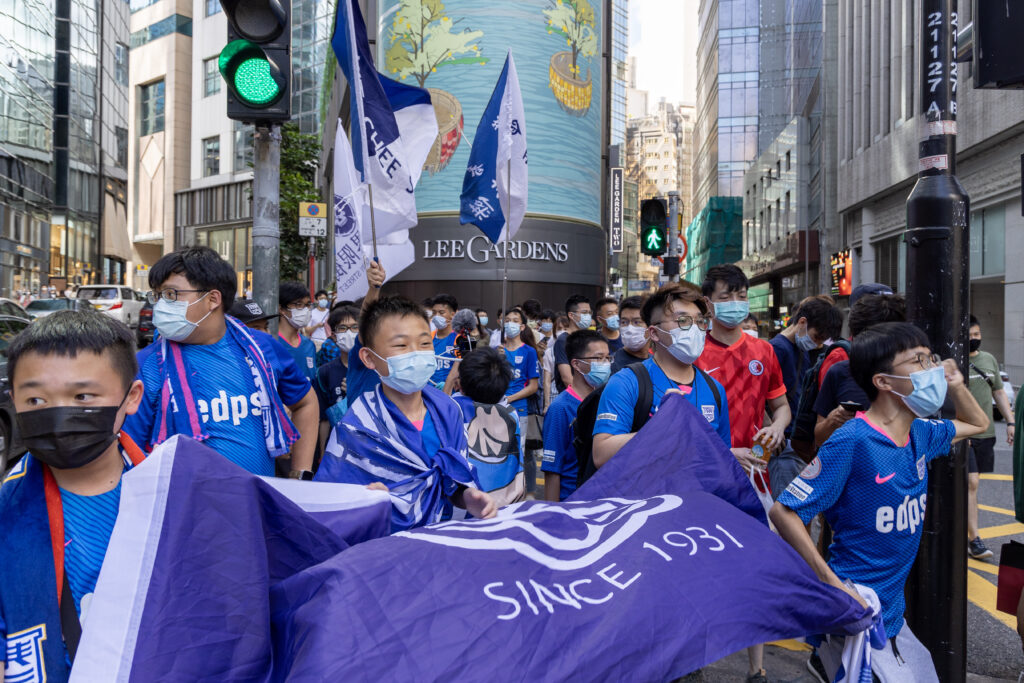
The retirement of these integral footballers heralded a different era for Kitchee SC. The second half of the 20th century saw Kitchee limited to status as a yo-yo club, with a number of relegations demoting the one-time great hope of football in Hong Kong to the mediocrity of the second and third tiers of league football. Meanwhile, football led the back page headlines of the South China Morning Post, Sing Tao Daily and other Hong Kong-based titles with a series of outrageous events across the sport in Hong Kong. Legendary World Cup-winning former England skipper Bobby Moore was appointed as manager just a few blocks away from the plummeting Kitchee at neighbours Eastern, and in 1982, the result of a vital South China AA match provoked a large-scale riot in the Causeway Bay district in a display of the heightened tension in Hong Kong during the 1980s. Kitchee were left side-lined as the sport attempted to modernize in Hong Kong, with varying degrees of success and a high proportion of unpredictability.
Enduring the wartime footballing void and multitude of relegations was no mean feat, with numerous football clubs – including the celebrated Seiko SA of the First Division – folding in an unstable era for football on the islands. Kitchee’s sizeable fanbase and respected history as one of the league’s oldest members ensured the club would live to dream again, and so it did at the turn of the century.
Under the stewardship of club president Ken Ng, one of the enduring figures of football in Hong Kong as an ex-referee, Kitchee Sports Club was revived and re-energized to adapt to and successfully navigate the modern age for the city’s most popular sport. As is often the case in the upper echelons of the beautiful game in Hong Kong, experienced characters in important club roles can be game-changing, and so it proved with Ng and the merry band of determined managers which followed his appointment in 2000.
Firstly, the installation of Chan Hung Ping, formerly manager of Hong Kong’s national side, as first team boss delivered a speedy return to the top flight in 2003. A succession of brief but impactful managerial stints followed, as Kitchee appointed a total of ten managers in the years since the departure of Chan Hung Ping after the club’s promotion. The changes have brought international recognition back to the Mong Kok Stadium, kickstarted by the 2-year reign of Serbian gaffer Dejan Antonić between 2005 and 2007. His astute leadership saw Kitchee reinstated as Hong Kong’s most exciting football club, winning three domestic cups and qualifying for the AFC Cup before Antonić was headhunted by the HKFA to take on the national team job.
With the club winning its first proper silverware since the 1960s, Kitchee’s marked improvement on the pitch and professionalism off it was central to Hong Kong becoming an overseas pre-season headquarters for the world’s biggest football clubs. North of Kowloon, the team’s Jockey Club Kitchee Centre training ground is wedged between high-rise towers in one of Hong Kong’s northernmost urban areas which is encompassed by vast country parks. Opened in 2014, it has served as an attractive post along with Kitchee’s Mong Kok Stadium in Kowloon for international prosperity in the football world. Kitchee president Ken Ng, with the help of his side’s high performance levels domestically, has lured Paris Saint-Germain, Manchester City and Arsenal to Kowloon in order to display Kitchee’s facilities and boost funding for the sport across Hong Kong.
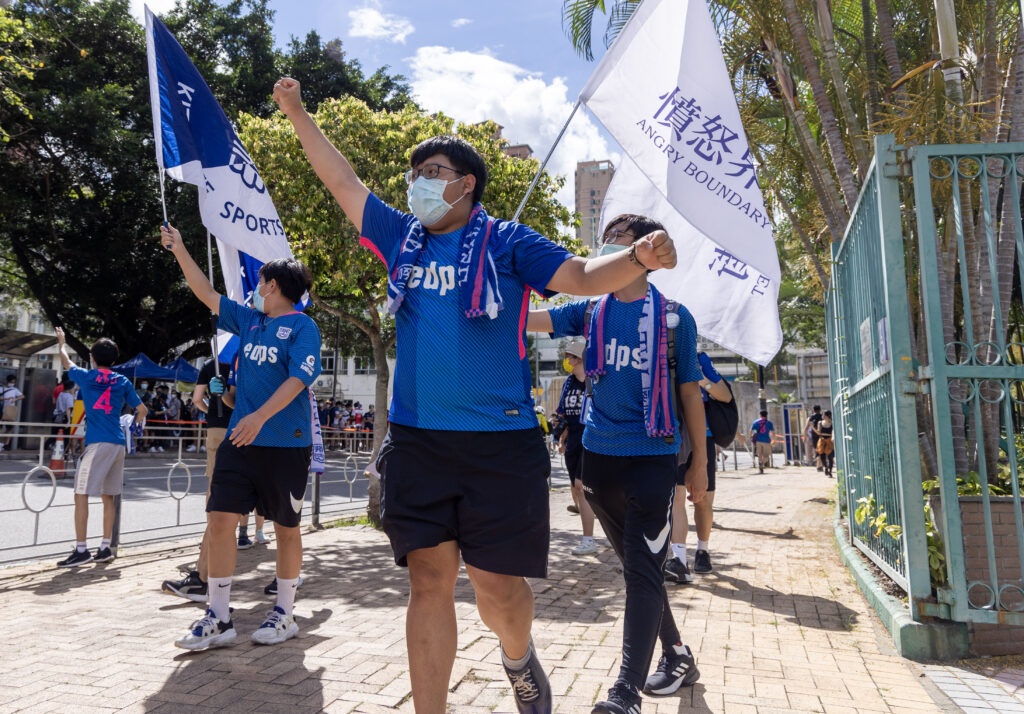
Kitchee’s intelligence at board level has been coupled with a steady flow of league and cup glory to ensure the continuation of this growth. After switching between caretaker managers and a year-long experiment with Chilean boss Julio César Moreno, the next batch of Kitchee triumphs were masterminded by Catalonian tactician Josep Gombau.
Gombau breathes football as a former coach at Barcelona’s famed La Masia academy and brought the Blaugrana’s iconic tiki-taka playing style to Hong Kong with his arrival in 2009. Few managers have been as revolutionary in Hong Kong’s First Division, as the coach elevated Kitchee to an undeniable force in Southeast Asian football. Implementing a possession-based strategy, Gombau won back-to-back league titles in the 2010-11 and 2011-12 campaigns – the first of which was the club’s first top flight championship in almost half a century. An influx of Spanish talent signed by Gombau extended Kitchee’s rule over the First Division beyond his own stay in Kowloon, having been poached by Australian side Adelaide United in 2013 to bring an end to his Kitchee career.
It was a prime example of the potential future for football in Hong Kong – a breeding ground for top international coaches. Due to Gombau’s popularity, Kitchee attempted to replicate his success with a trio of Spaniards following the Catalonian into the dugout at Mong Kok Stadium. Àlex Gómez, José Francisco Molina and Abraham García led Kitchee from 2013 to 2016 as short-term fixes. With only one season of success between them, and an incredible one at that as Molina’s Bluewaves lifted a domestic treble in the 2014-15 season, the club eventually turned to the man who had overseen the club’s resurgence behind the scenes.
Chu Chi Kwong is the eternal genius of Kitchee Sports Club. A director of football, assistant manager and caretaker boss, Chu is one of the most successful managers to feature in Hong Kong’s top division despite his apparent reluctancy to take on the job. Twice named Hong Kong Coach of the Year and associated with Kitchee since 2006, the club’s 21st century comeback can be attributed to Chu as much as club president Ken Ng.
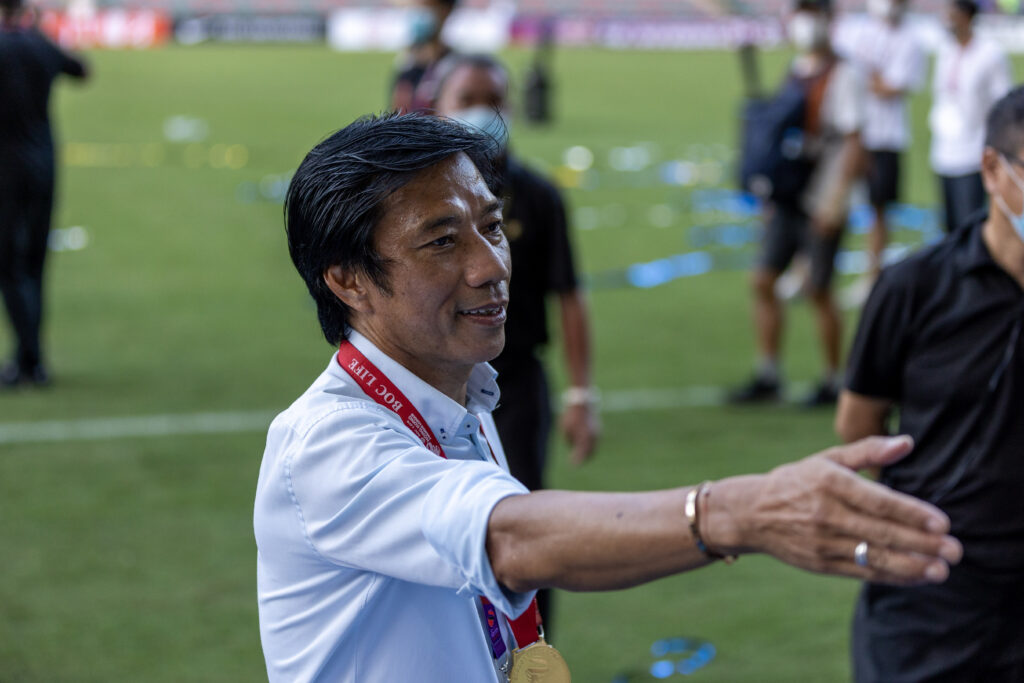
Chu understands the game in Hong Kong like no other. Adept at youth level, first team management and in the general running of Kitchee SC, the former defender excelled during the transition between First Division and the re-named Hong Kong Premier League after finally accepting the manager’s post in 2016. Chu’s managerial record accounts for much of the club’s honours list in recent times, and in spite of the HKPL’s infancy, Kitchee are its most successful club with four of five titles under Chu’s name.
Comparisons can be drawn to the way in which newfound European super clubs have dominated their domestic league without continental success and Kitchee’s ascension to control over league football in Hong Kong. If the HKPL is to prove the worth of its full professional status, greater achievements in Asian football competitions is a necessary platform to show this. As the league’s headliners, responsibility falls to Kitchee to demonstrate the improving standard of football in the city – a challenge the club has risen to.
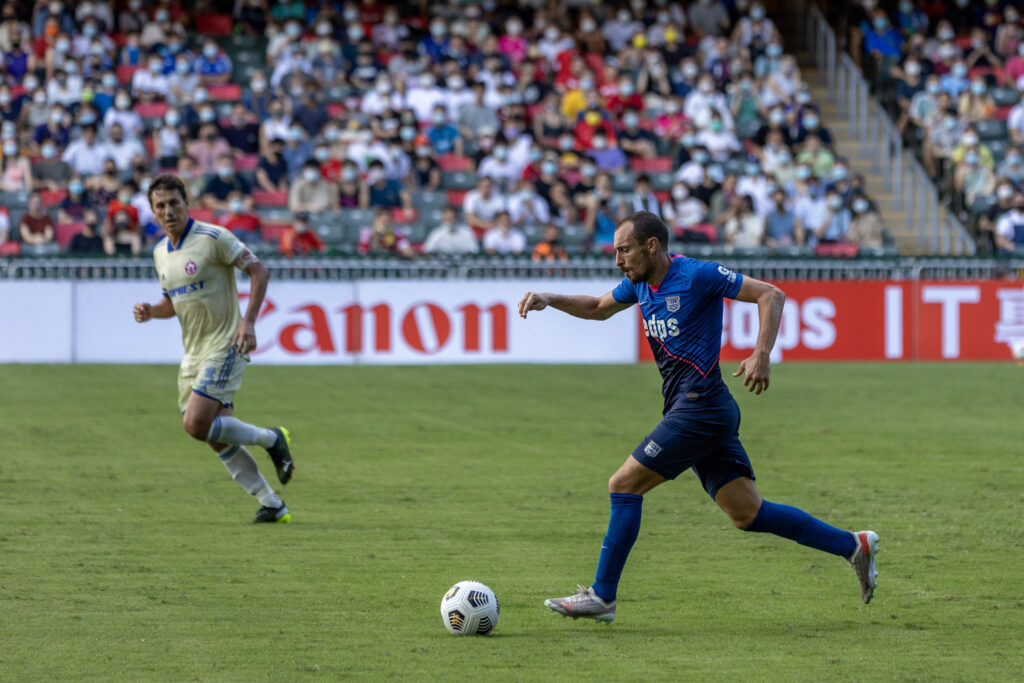
Continental victories had escaped even the greatest teams to grace Hong Kong’s top flight, with only mild success in Asia’s AFC Cup – the equivalent to the UEFA Europa League. Guided by Chu Chi Kwong, Kitchee qualified for the 2017, 2018 and 2019 editions of the AFC Champions League with the sole aim of reaching the group stages. Penalty shootout heartbreak in the play-off round against South Korea’s Ulsan Hyundai denied a place for the Bluewaves in 2017’s group phase, but the following season would bring unrivalled continental success to Hong Kong.
A direct qualification for the 2018 AFC Champions League group stage boosted the club’s chances of securing a first ever victory for a Hong Kong-based football club in Asia’s top club tournament, but with the draw placing Kitchee in a group with Kashiwa Reysol, Jeonbuk Hyundai Motors and Tianjin Quanjin, a dash of stardust was required.
Enter Diego Forlán. A free agent with two years out of football after leaving Mumbai City in 2016, the famous Uruguayan marksman was no stranger to Asian football having netted 19 times for Japan’s Cerezo Osaka over two seasons. It was no secret that Forlán had been transferred to Hong Kong to achieve that long-awaited Champions League win, and with the grand stage awaiting, Kitchee set up shop at the Hong Kong Stadium. A combined total of almost 30,000 supporters attended Kitchee’s three home group stage matches, but after losing the first tie 0-6 to Jeonbuk, the dream appeared to be faltering.
However, as Kashiwa Reysol stumbled into town in March 2018 for the second group stage match, Kitchee sensed an opportunity. With the game fading out to a 0-0 draw, Cheng Chin Lung scored to write history in the 92nd minute – Kitchee had won an AFC Champions League group stage match. Supported by the tiring veteran Forlán in attack, it was the Bluebirds’ academy graduate Cheng with the all-important moment. Perhaps it was the dream scenario – a Hong Kong-born youngster taking the limelight away from an aging marquee signing to put the Hong Kong Premier League and its own talent on the map.
Kitchee were denied another memorable result at the Hong Kong Stadium in the subsequent round of fixtures, as French forward Anthony Modeste scored with just minutes to play in a key victory for Tianjin Quanjin. The ultimate outcome of the 2018 AFC Champions League group phase was of little importance to neither Kitchee nor the decision makers at the HKFA, because the club had provided their evidence. Evidence that the sport was thriving in Hong Kong to cap an incredible decade for Kitchee Sports Club.
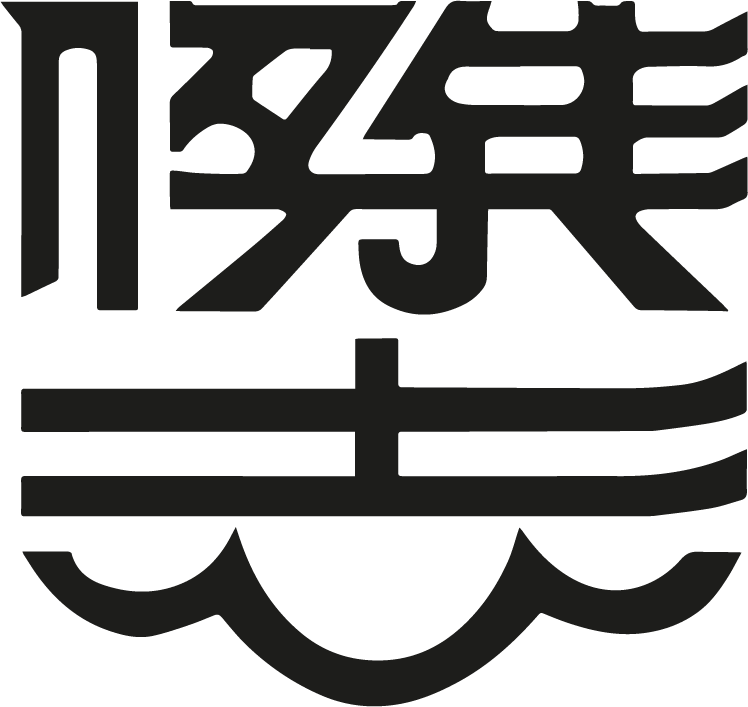
Hong Kong’s top flight could be labelled a retirement home for football’s lost stars. It could also be given the tag of instability, with its most traditional teams South China AA and Hong Kong Football Club disappearing down the footballing ladder recently. As a visitor, you could also have a complete disregard for the city’s entire football system, with little to point you in its direction.
Life is constantly moving in Hong Kong. A prominent skyline often obscures the day-to-day events at street level, with the city’s many mazes hiding the intricacies of Hong Hong’s society and people. Football is one of these complexities, concealed amongst the skyscrapers and looping motorway bridges to reveal a tense, heartfelt sporting ambience.
Found in what could be described as the city’s sporting hive, Mong Kok Stadium is nothing short of picturesque with its alluring roof structure and pristine turf. It’s almost impossible to escape the din of city life in Kowloon and Hong Kong Island, unless heading out to the residential Lantau Island, and with busy roads lying behind the arena’s walls, Mong Kok Stadium is noisy.
Defying the Western assumption of sparsely populated stands on a matchday, the stadium hosted almost 20,000 football fans in the latest edition of the HKPL despite the impact of COVID-19. Current home to Kitchee and rivals Eastern, the charming venue comes alive on a matchday.
The vibrancy which comes with a fixture in the HKPL for Kitchee SC is a direct result of the club’s unofficial supporters group Ultras Bluewave. Kitted out in blue with banners, megaphones and flags, the ultras’ constant drumming is now synonymous with Kitchee matches and spurs the team onto success. Drumming for the sake of drumming is one thing but supporting the game in Hong Kong and showing why it matters is another. Furthermore, the fans have formed enticing rivalries with supporters of Eastern, Southern and other HKPL sides to bring a derby atmosphere to Hong Kong.

Emerging from the nearby metro stops of Prince Edward Station and Mong Kok East to a steady flow of blue shirts is now commonplace in Kowloon’s Mong Kok area, with shoppers often left stunned by the sight of enthused match-going locals sporting Kitchee jerseys in growing numbers. As hoards of football supporters return to stadiums around the world, Hong Kong is ready to welcome intrigued residents to its budding football industry which is so wonderfully encouraged by HKPL ultras.

As the sport’s popularity grows in Hong Kong, serious consideration must be taken in how to maximise the city’s football boom. The creation of the Hong Kong Premier League in 2014 has brought confirmation and necessity of professional status for the city’s top flight clubs, but what else? Under the new title, Hong Kong lost its finest football team of all time when South China AA were forced to impose a self-relegation in 2017 due to a lack of financing, leading to major questions over sustainability and regulation in the HKPL.
The beautiful game has always experienced significant lulls throughout its history on the islands, but the present day appears to be the ideal time for serious development in Hong Kong. In 2011, Hong Kong’s government backed the ‘Project Phoenix’ to enact significant and lasting change in football. The national team and the city’s top flight has attracted established foreign names to lead by example throughout the last decade, altering the sport’s tactical advancement in Hong Kong with fresh ideas and experience. Consequentially, the standard of football in Hong Kong continues to improve. So where are the swathes of fans?
Attendance figures in the HKPL demonstrate a positive progression when considering the special circumstances of the city, and football also remains the city’s most popular sport. However, in order to capitalise on the league’s building stature, greater publicity must be given to the game in Hong Kong. With the resources at their disposal, clubs such as Kitchee have upped their efforts to encourage the next generation of football players and fans in Hong Kong, but a wider elevation of football may be required.
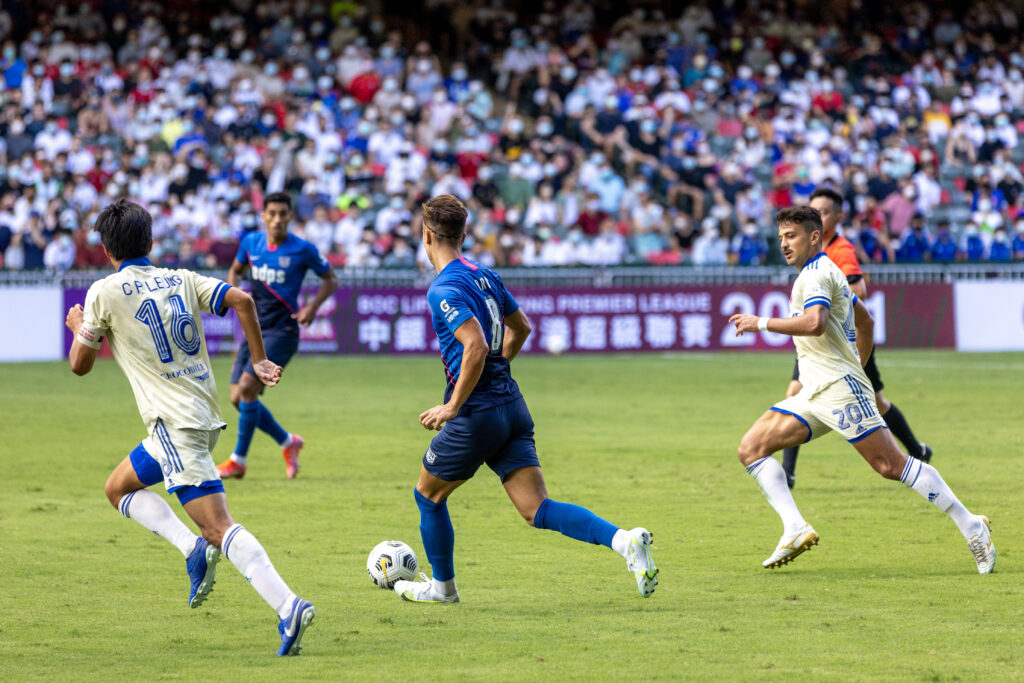
Even if a city-wide revamp of training centres and facilities has amassed international acknowledgement as one of football’s prime resort locations, the often unconventional world of football in Hong Kong has recently observed the lesser known breakthrough of one of the most skilled and driven women in the sport. Chan Yueng Tin, a Beckham-obsessed Hong Konger, was the first ever female manager to lead a men’s team to domestic top flight glory in 2016 after being recruited by HKPL side Eastern at the age of 27. The magnitude of her achievement cannot be understated, and Chan wrote her name into further record books when she became the first woman in men’s AFC Champions League history to take charge of a team in the competition’s group stage in 2017.
Chan Yueng Tin remains one of the most promising coaches in Asia with the Chinese FA, bringing attention to the foundations laid by the HKFA and HKPL to accelerate her career with great effect. In spite of this breakthrough, the city’s football authorities were reluctant to impose a longer ban on two members of HKPL side Happy Valley’s first team staff for sexist comments made to female league referee Gigi Law in April 2021. The FIFA-enforced minimum 10-match ban was a reminder of the convoluting football scene in Hong Kong which often plays to its own shortcomings.
As mooted by Chan Yueng Tin, Hong Kong’s football culture is one steeped in potential yet often downplayed by the needless faults which define its system.

With Hong Kong and the rest of Southeast Asia continuing to battle the COVID-19 pandemic, the conclusion to the 2020-21 Hong Kong Premier League season was a welcome return to normality with fans welcomed back into stadiums in strong numbers. Yet in Hong Kong’s unorthodox football environment, little is ordinary; the final matchday for the division’s championship group (top four teams) was more of an extraordinary nature.
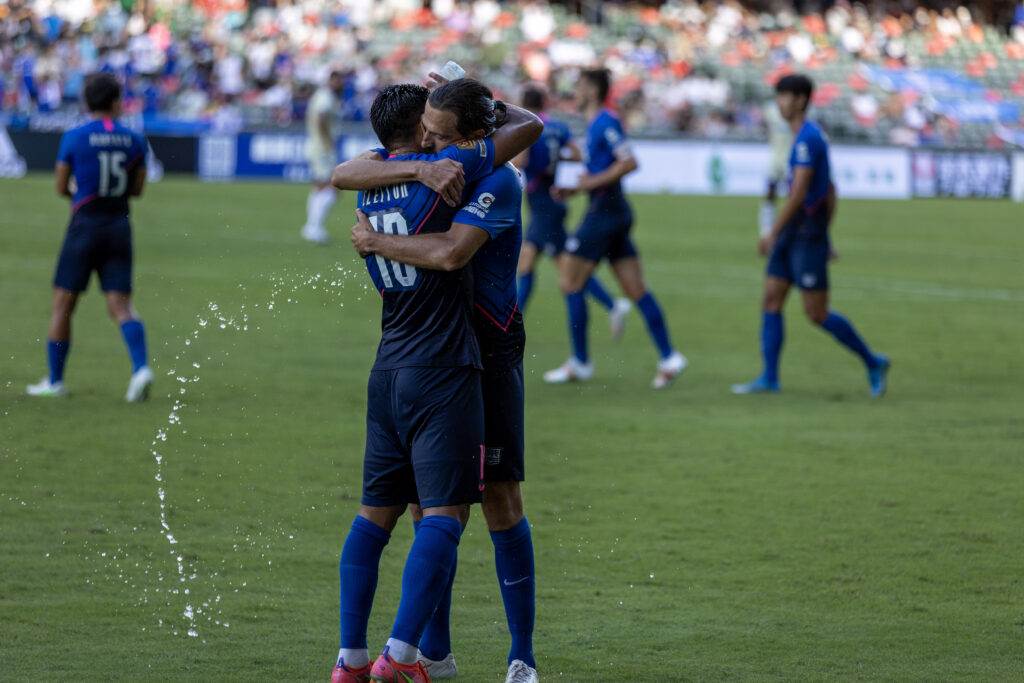
Kitchee versus Eastern. First versus second. Reigning champions versus title challengers. One team taking the league trophy home. As excitement built for the match, we sent out Kitchee fan Leo Cheng to capture the most unique moments in the streets of Hong Kong, the stands of Hong Kong Stadium and the on-pitch emotions of both teams on 23 May 2021.
Like a growing proportion of Hong Kong’s youth, Leo has been captivated by the HKPL and the latest season of the city’s top flight lured further attention for the domestic game. The delayed start to the campaign had few negative effects for Kitchee, storming out of the blocks to end the regular season in first place with ten victories, four draws and zero defeats.
As four-time winners of the HKPL heading into the 2020-21 season, the Bluewaves are considered to be the best team in Hong Kong’s modern era of football with a long-standing backbone of players established in the top flight. Captained by 37 year-old midfielder Huang Yang, experienced pillars of the game in Hong Kong such as Dani Cancela, Hélio and Wellingsson were complimented by the exciting threats of Cleiton, Matt Orr, Manuel Gavilán and Raúl Baena in midfield and attack to deliver an unprecedented level of success at the Mong Kok Stadium.
To further assert their superiority over the chasing pack, Kitchee signed up seasoned Montenegrin striker Dejan Damjanović for the remainder of the 2020-21 season in the winter transfer window. At 39 years of age, boasting international experience and over 300 career club goals to boot, Kitchee had effectively brought in Asian football’s answer to Zlatan Ibrahimović with a comparable frame and insistence upon the use of his first name. The deadly number nine was a sensation for over a decade of K-League football, guaranteeing expert goalscoring ability on the shores of Kowloon as Kitchee attempted to cement an early league title win.

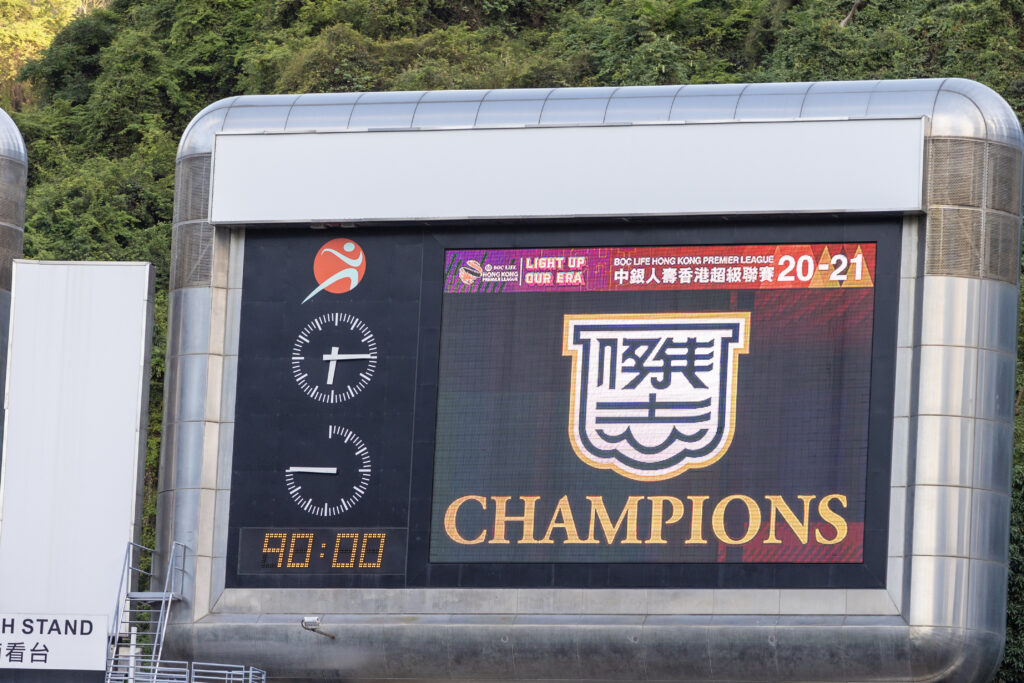
Yet the Bluebirds’ star-studded line-up refused to irk Eastern in second place, keeping tabs on Kitchee until the final day of the season as the clubs faced off for the championship. The team in blue had handed Eastern a lifeline with two shock defeats in their previous two matches, but Chu Chi Kwong’s Kitchee team carried the experience of previous title triumphs to regain their composure at the vital moment. Roared on by a sizeable crowd at Hong Kong Stadium, a Damjanović double rewarded Kitchee with a fifth HKPL success to move to eleven top flight titles overall, routinely defeating Eastern 2-0.

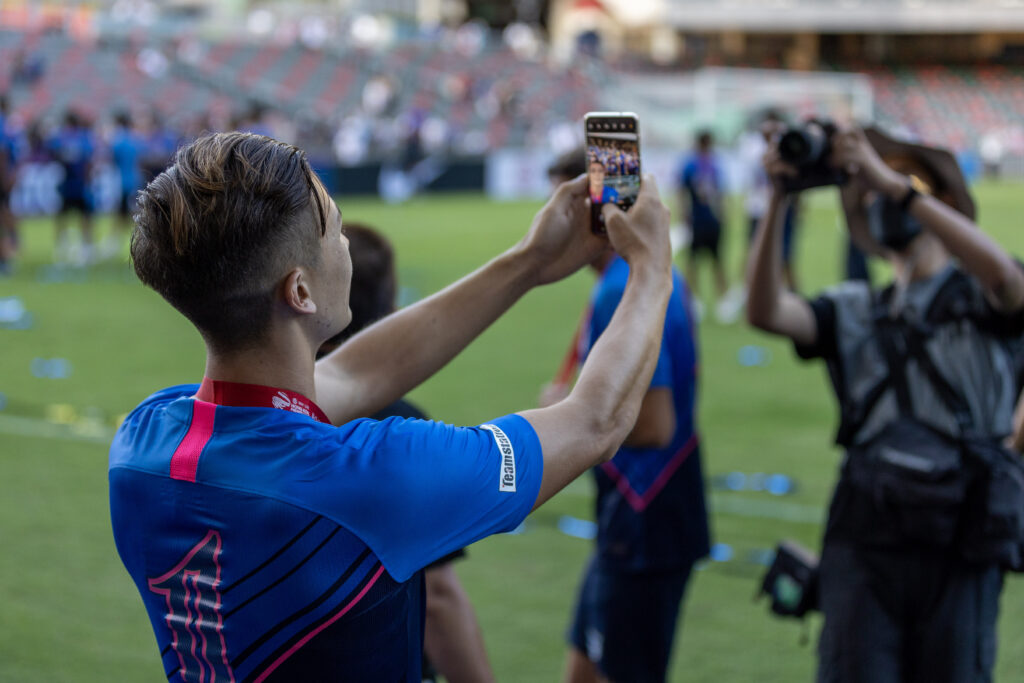
The future is promising for Kitchee who intend to make further strides in the upcoming AFC Champions League, while Hong Kong fights for its very future in the sport. The city is bustling, and with the bubbling anticipation which comes with each season of the Hong Kong Premier League, the enthusiasm for football is just around the corner of that soaring skyscraper. As a visitor to this great location, you don’t need to look far to discover Hong Kong’s unique brand of football – it’s there alright.
The views expressed in articles do not necessarily represent those of FUTBOLISTA Magazine or its editor. FUTBOLISTA Magazine is committed to publishing a wide variety of news and features.

FUTBOLISTA Magazine is coming to an end (for now) after the recent release of our fourteenth edition.
